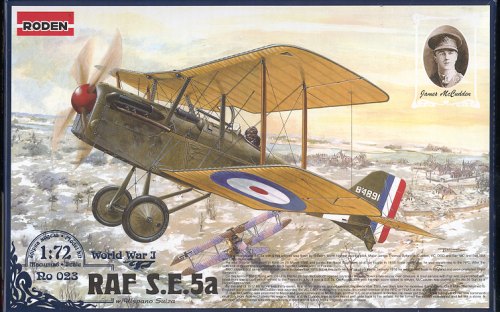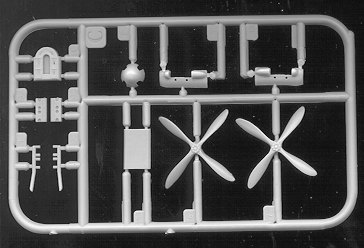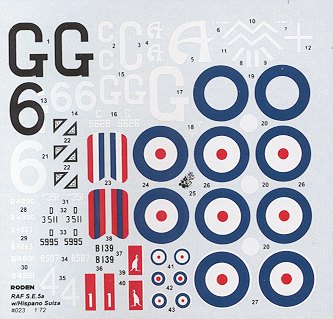
|
KIT: |
Roden 1/72 Se-5a (Hispano-Suiza) |
|
KIT # |
023 |
|
PRICE: |
£ |
|
DECALS: |
eight aircraft |
|
REVIEWER: |
|
|
NOTES: |

|
HISTORY |
|
THE KIT |
 I'm going to do the almost unthinkable and refer you to the earlier
Wolsley-engined preview for a look at
the majority of the sprues and an assessment of the kit itself. I can do
this because there is little difference between the kits. The sprue with
the wings and the one with the fuselage is the same. The biggest change is
the new sprue for the nose of the aircraft. This includes a pair of four
bladed props as well as the different radiator, prop spinner, exhausts and
upper fuselage inserts. The flat, rectangular thing is a new lower fuselage
vent section.
I'm going to do the almost unthinkable and refer you to the earlier
Wolsley-engined preview for a look at
the majority of the sprues and an assessment of the kit itself. I can do
this because there is little difference between the kits. The sprue with
the wings and the one with the fuselage is the same. The biggest change is
the new sprue for the nose of the aircraft. This includes a pair of four
bladed props as well as the different radiator, prop spinner, exhausts and
upper fuselage inserts. The flat, rectangular thing is a new lower fuselage
vent section.
The instructions are excellent as we have come to expect from Roden, providing the needed color information as well as any needed differences required for specific schemes. The colors are referenced to Humbrol paints, but a generic name equivalent is given to help those of us who do not have access to Humbrol. Thank you!
There are markings for no less than eight aircraft! One thing about Roden
is that the builder is never lacking for choices of markings! The aircraft
given are:
For the most part, they are painted Green upper and Linen lower surfaces, though the first example is in a pseudo-French camo with Light Earth and Chocolate Brown added to the upper surface colors. Now I'd be less than honest to say that Roden decals have been a bit of a challenge to get to work properly, but I've seen a number of Roden kits built using them so I'm obviously doing something wrong when applying them.
|
CONCLUSIONS |
Roden's WWI kits have been well received and there is no reason why this one shouldn't do equally as well. If you are into small scale WWI aircraft, then this is one you should seriously consider.
Thanks to the fine folks at
 . Visit
them by clicking on the logo.
. Visit
them by clicking on the logo.
If you would like your product reviewed fairly and quickly by a site that has over 200,000 visitors a month, please contact me or see other details in the Note to Contributors.